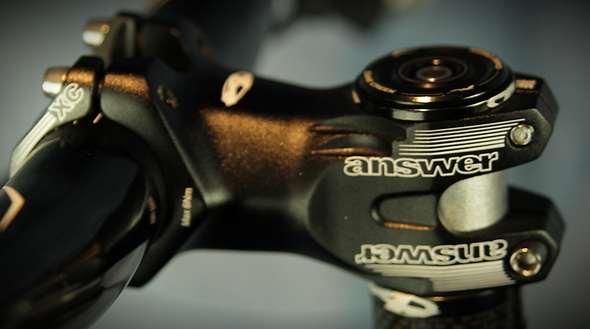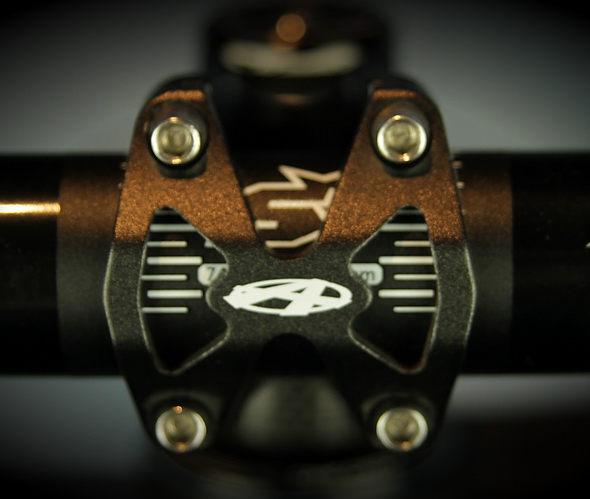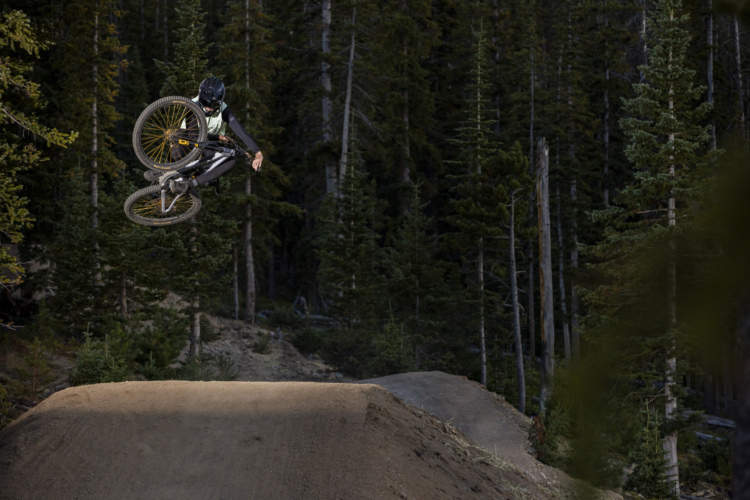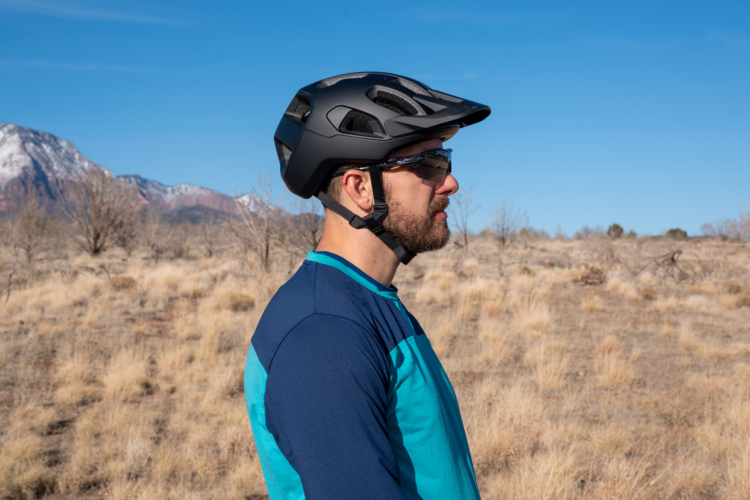
Having developed a solid relationship with the great folks at Answer over the last several years, whenever new products are sent to market they give us a call and let us put them to the test. This year I got my hands on the new ProTaper Carbon 780 DH bar, the ROVE XC stem, the new long sleeve jersey, and the new WON gloves. In this article, I will focus solely on the hardware so stay tuned for an article on the new Answer soft goods soon!

Carbon 780 bar
With some very successful aluminum bar designs under their belt, and a few carbon bars also making waves, Answers new Carbon 780 is making a big splash in the pond. The 780 is sculpted from uni-directional carbon, and is a scant 250 grams (). Utilizing the same ProTAPER technology as previous bars, the carbon wall thickness varies where it is needed (and more importantly where it is not), so you get a bar that is both strong and lightweight, with an overall stiff-but-not-too-stiff feel.
The 4 up sweep and 8 back sweep stays the same from the aluminum versions, keeping your hands in a very wrist-friendly position. With two rise options–a pretty flat 12.7mm rise and a 25.4mm rise–you can choose how you want to set up your cockpit: a bit more forward attack, or a slightly upright feel. As a final touch, the bar sports a gritty grip area where the grips clamp down on the bar, so there is no need for grip paste.

Ive mentioned before that after running a carbon bar it would be hard for me to go back. After riding with such a sweet full-width carbon 780mm bar, it would be even harder! I have used (and loved) aluminum versions of the ProTAPER 780, and the fact that it is now available in carbon is just an added bonus. Tack on the 85-gram weight savings, and the benefits just continue to pile up.
The bar provides a great feel, putting my hands in the exact position that I like.The construction of the bars also reduces the sting of bigger impacts and washboard sections of the slopes, which allows me to ride longer with less hand fatigue.
The uni-directional carbon layup is both stylish and practical. To me this look is much nicer than the alternative and it matches my V10C perfectly. I also feel that uni-directional carbon works better than a straight weave since there are no resin voids between the weave.

ROVE XC Stem
Looking for ways to remove some weight from my new Nomad Carbon while still keeping strength and durability is my current project. Having used the DJ, DH, and -ONE stems from Answer, I am familiar with the quality in workmanship, and expected no less when the ROVE XC arrived.
Although the faceplate looks like the DH stem, the similarities end there. The Rove is narrower and designed for lighter-duty use. At 128 grams for the 70mm version, the Rove is a decent weight and, in fact, is nearly the same weight as a Race Face Turbine. Made from forged 2D 6066AL, Answer met their target weight without sacrificing strength thanks to a bunch of high-quality CNC work. The 4-bolt face plate spreads forces evenly across the handlebars, reducing the chance for stress risers (nasty elevated areas of stress which like to crack things), and the opposing steering tube bolts do the same. This makes this stem safe for use with both carbon bars and carbon steering tubes.

The Nomad Carbon comes with a Truvativ AKA stem (if you purchase the complete SPX package). It was a decent stem to start with, but I wanted something a bit sleeker and lighter. With a 70mm option, I figured the Rove XC would be great. Knowing I will be running various bars, both carbon and aluminum, I figured that the wide faceplate would keep things safe.
Installing the Rove is no issue at all: you just need a 4mm hex key and a torque wrench. Remembering to read the instructions (yes, I read all the literature that comes with parts), I ensured the spacing was even on the faceplate top to bottom and torqued the 4 bolts down to 6Nm, as well as the two for the steering tube. With the steering tube you have to remember to add a bit of preload to the top cap bolt; enough load to prevent any free play, but not enough to prevent the bars from steering with little effort.
To date, the stem is holding up great, with no issues at all: no creaking or loose bars. Changing over a few bars for reviews, I didn’t have any issues of crushing or imprinting (which is quite possible, especially with carbon) underneath the top cap. So again, if you follow instructions, everything will go well!

MSRP on the Carbon 780 is $180 vs. $90 for the aluminum versions, and the Rove XC stem costs $80, both of which are competitively priced.
I would like to thank the folks at Answer for sending down the gear for review. Stay tuned for a review of their new softgoods!





















2 Comments
Nov 7, 2012
What's up with the 4.5mm bolts on the Rove stem? I imagine a lot of people (myself included) don't have a wrench this size--and it's definitely not included on my multi-tool.I ran into a similar issue on my Turbine Cranks--the chainring bolts are T30 (not T25 like everything else). I stripped at least one bolt out on the trail last week trying to tighten things up with the only Torx on my multi-tool--a T25. How about we just settle on a few standard sizes for bolts and move on...Update: 4.5mm bolt size was a typo. It's a 4. Phew!
Nov 7, 2012